 W
WThe Crimean War was a military conflict fought from October 1853 to February 1856 in which Russia lost to an alliance of France, the Ottoman Empire, the United Kingdom and Sardinia. The immediate cause of the war involved the rights of Christian minorities in the Holy Land, which was part of the Ottoman Empire. The French promoted the rights of Roman Catholics, and Russia promoted those of the Eastern Orthodox Church. Longer-term causes involved the decline of the Ottoman Empire and the unwillingness of Britain and France to allow Russia to gain territory and power at the expense of the Ottoman Empire. It has widely been noted that the causes, in one case involving an argument over a key, had never revealed a "greater confusion of purpose" but led to a war that stood out for its "notoriously incompetent international butchery".
 W
WThe Macedonian rebellion of 1854 took place in 1854 and is divided into two phases: the first phase took place in Western and Southern Macedonia and the second in Chalkidiki. However, after pressure from the United Kingdom and France on the government of King Otto of Greece, he was forced to recall the chieftain taking part in the rebellions throughout the Greek-inhabited regions of the Ottoman Empire, including Macedonia. The governments of the United Kingdom and France had assumed that the rebellions were related to the Crimean War (1854–1856).
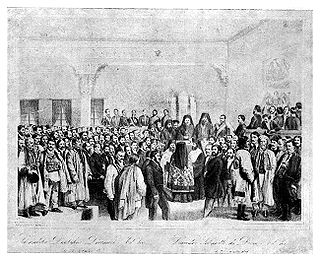 W
WThe two Ad hoc Divans were legislative and consultative assemblies of the Danubian Principalities, vassals of the Ottoman Empire. They were established by the Great Powers under the Treaty of Paris. By then, the Crimean War had taken the two states out of Russia's sphere of influence, and had nullified the Moldo-Wallachian Regulamentul Organic regime. Officially, the two assemblies were provisional replacements for the traditional assemblies, the Sfaturi. The term "divan", is derived from the Ottoman rule, being the name of a high governmental body in a number of Islamic states.
 W
WAhmed I, born 2 December 1805 in Tunis died 30 May 1855 at La Goulette, was the tenth Husainid Bey of Tunis, ruling from 1837 until his death. He was responsible for the abolition of slavery in Tunisia in 1846.
 W
WThe Åland War is the Finnish term for the operations of a British-French naval force against military and civilian facilities on the coast of the Grand Duchy of Finland in 1854–1856, during the Crimean War between the Russian Empire and the allied France and Britain. The war is named after the Battle of Bomarsund in the Åland Islands. Although the name of the war refers to Åland, skirmishes were also fought in other coastal towns of Finland in the Gulf of Bothnia and the Gulf of Finland.
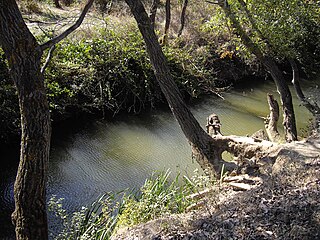 W
WThe Alma is a small river in Crimea that flows from the Crimean Mountains in a broadly west-north-west direction to the Black Sea. Its mouth lies just south of Pishchane, halfway between Yevpatoria and Sevastopol. Alma is the Crimean Tatar word for an "apple".
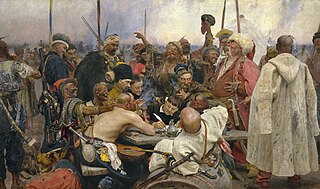 W
WAzov Cossack Host was a Cossack host that existed on the northern shore of the Sea of Azov, between 1832 and 1862.
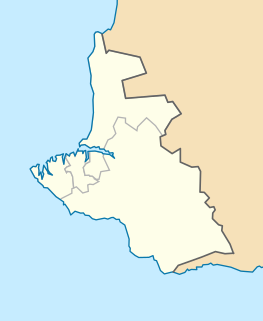 W
WBalaklava is a settlement on the Crimean Peninsula and part of the city of Sevastopol. It is an administrative center of Balaklava Raion that used to be part of the Crimean Oblast before it was transferred to Sevastopol Municipality. Population: 18,649 .
 W
WThe Baltic Medal was a campaign medal approved on 6 June 1856, for issue to officers and men of the Royal Navy, Royal Marines, and Royal Sappers and Miners who served between March 1854 and August 1855 in the Baltic Sea operations against Russia in the Baltic theatre of the Crimean War, or Åland War. The medal primarily covered naval actions but was also awarded to 106 men of the Royal Sappers and Miners who were landed to place demolition charges against Russian fortifications at Bomarsund and Sveaborg.
 W
WEdward James Boys was a leading authority on the men of the cavalry regiments of the British Army who took part in the famous Charge of the Light Brigade of 1854 during the Crimean War of 1854-56 between the UK and Russia.
 W
WThe Brotherhood cemetery is an Imperial Russian military cemetery in Sevastopol, Ukraine. The Brotherhood cemetery was founded in 1854 as a temporary burial place for Russian soldiers and officers who were killed during the first siege of Sevastopol.
 W
WThe Charge of the Light Brigade was a failed military action involving the British light cavalry led by Lord Cardigan against Russian forces during the Battle of Balaclava on 25 October 1854 in the Crimean War. Lord Raglan had intended to send the Light Brigade to prevent the Russians from removing captured guns from overrun Turkish positions, a task for which the light cavalry were well-suited. However, there was miscommunication in the chain of command and the Light Brigade was instead sent on a frontal assault against a different artillery battery, one well-prepared with excellent fields of defensive fire. The Light Brigade reached the battery under withering direct fire and scattered some of the gunners, but they were forced to retreat immediately, and the assault ended with very high British casualties and no decisive gains.
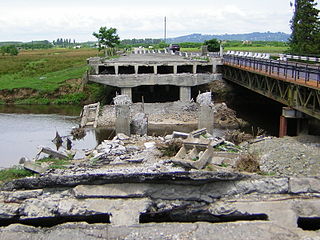 W
WThe Choloki in Georgia forms the border between the autonomous province of Ajaria and the province of Guria. For a time in the 19th century it formed the border between Turkey and Imperial Russia.
 W
WThe Crimea Medal was a campaign medal approved on 15 December 1854, for issue to officers and men of British units which fought in the Crimean War of 1854–56 against Russia. The medal was awarded with the British version of the Turkish Crimea Medal, but when a consignment of these were lost at sea, some troops were received the Sardinian version.
 W
WThe Crimea Memorial Church, also known as Christ Church, is a Church of England church in the Beyoglu - Taksim district of Istanbul, Turkey.
 W
WCrimean Tom was a cat noted for his association with the British Army during the Crimean War. Found by Lieutenant William Gair in Sevastopol after a year-long siege, he is said to have led British forces to valuable caches of hidden supplies that helped ease starvation among the troops. Gair brought Tom back to England after the war but the cat died soon afterwards. He was stuffed and presented to the Royal United Services Institute. A stuffed cat bought in a flea market in the 1950s is in the collection of the National Army Museum and is sometimes described as being Tom, but there is no proof it is the same cat.
 W
WThe Crimean War Research Society (CWRS) is an international society of professional and amateur historians who research the Crimean War of 1854-56. The Society aims to bring previously unpublished or under researched material concerning the Crimean War to the attention of a wider audience, together with making it available to present and future historians. It publishes a quarterly journal, The War Correspondent.
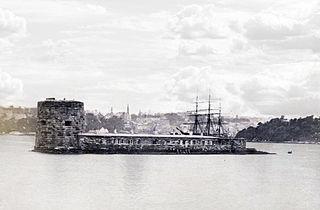 W
WFort Denison, part of the Sydney Harbour National Park, is a protected national park that is a heritage-listed former penal site and defensive facility occupying a small island located north-east of the Royal Botanic Gardens and approximately 1 kilometre (0.62 mi) east of the Opera House in Sydney Harbour, New South Wales, Australia. The island was formerly known in its indigenous name of Mat-te-wan-ye, and as Pinchgut Island.
 W
WThe Grand Crimean Central Railway was a military railway built in 1855 during the Crimean War by Great Britain. Its purpose was to supply ammunition and provisions to Allied soldiers engaged in the siege of Sevastopol who were stationed on a plateau between Balaklava and Sevastopol. It also carried the world's first hospital train.
 W
WThe Guards Crimean War Memorial is a Grade II listed memorial in St James's, London, that commemorates the Allied victory in the Crimean War of 1853–56. It is located on Waterloo Place, at the junction of Regent Street and Pall Mall, approximately one-quarter of the way from the Duke of York Column to Piccadilly Circus.
 W
WMarie Edme Patrice Maurice de MacMahon, marquis de MacMahon, duc de Magenta was a French general and politician, with the distinction of Marshal of France. He served as Chief of State of France from 1873 to 1875 and as President of France, from 1875 to 1879.
 W
WKadikoi in the 19th century was a village on the Crimean peninsula, in Ukraine, about one mile north of Balaklava. The Battle of Balaclava was fought on the hills and valleys to the north of Kadikoi in 1854. The village was later known as Kadykovka (Кадыковка), and Pryhorodne (Пригородне). Currently it's merged into Balaklava city, and is known as microdistrict Kadykovka. Its original Crimean Tatar name means literally "village of a judge".
 W
WCanon William Murrell Lummis MC was a British military historian most noted for the research he conducted on the Victoria Cross, the Charge of the Light Brigade, and Rorke's Drift.
 W
WA mamelon is a French name for a breast shaped hillock. At the Siege of Sevastopol (1854–1855) during the Crimea War the French called a strategic hillock the Mamelon. The British adopted the French name for the hill, but also called it Gordon's Hill.
 W
WMajor General Markham Le Fer Taylor was a career officer of the British Army, serving in the Royal Artillery.
 W
WNorton House was a mansion in Midsomer Norton, Somerset. It was built around 1789 by the Savage family, investors in mines in the Somerset Coalfield. It was demolished in 1937-8 to make way for housing but several features from the house and its estate survive to this day.
 W
WOltenița is a city in Muntenia, Romania in the Călărași County on the left bank of the river Argeș where its waters flows into the Danube.
 W
WOrder of the Medjidie is a military and civilian order of the Ottoman Empire. The Order was instituted in 1851 by Sultan Abdulmejid I.
 W
WRami Barracks were an Ottoman and later Turkish Army barracks located in the Eyüp district on the European part of Istanbul, Turkey. They were built in the 1770s in the Ottoman Empire era. Currently, it is under restoration for use as a library.
 W
WRedoubt Kali was a Russian fort on the east coast of the Black Sea. It was 10 miles north of Poti. It was captured by the British during the Crimean War in 1854. The redoubt was colloquially commonly called the Redut Kale, modern Kulevi in Georgia. The redoubt was demolished in the early 20th-century in 1907.
 W
WRegulamentul Organic was a quasi-constitutional organic law enforced in 1831–1832 by the Imperial Russian authorities in Moldavia and Wallachia. The document partially confirmed the traditional government and set up a common Russian protectorate which lasted until 1854. The Regulamentul itself remained in force until 1858. Conservative in its scope, it also engendered a period of unprecedented reforms which provided a setting for the Westernization of the local society. The Regulamentul offered the two Principalities their first common system of government.
 W
WRenkioi Hospital was a pioneering prefabricated building made of wood, designed by Isambard Kingdom Brunel as a British Army military hospital for use during the Crimean War.
 W
WThe Royal Patriotic Fund Corporation was a charitable body set up by Royal Warrant in the United Kingdom during the Crimean War. It provided assistance to the widows, orphans and other dependants of members of the armed forces. Under The Royal Patriotic Fund Order 2005 these responsibilities were transferred to RPFC, a charitable company limited by guarantee.
 W
WThe Russian Memorial is an obelisk in the churchyard of St John sub Castro in Lewes, the county town of East Sussex, England. It was erected in 1877 at the behest of Alexander II, Emperor of Russia, in memory of 28 Finnish soldiers of the Russian Army of the Crimean War who died while prisoners of war in Lewes between 1854 and 1856. It has been designated by English Heritage as a Grade II listed building.
 W
WSt. Vladimir's Cathedral is an Orthodox church in Sevastopol which was built in the aftermath of the Crimean War as a memorial to the heroes of the Siege of Sevastopol (1854–1855).
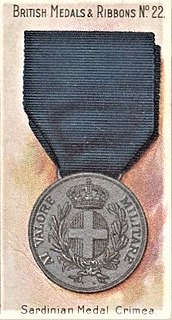 W
WThe Sardinian Crimean War Medal or, more formally, the silver medal for Military Valour for the Eastern Expedition 1855-1856 was a gallantry medal awarded by King Victor Emmanuel II of Sardinia for bravery during the Crimean War (1855-1856) against the Russian Empire. It is a variant of the Sardinian Medal of Military Valor.
 W
WThe Sebastopol Monument is a triumphal arch that is located in the Old Burial Ground, Halifax, Nova Scotia, Canada. The arch commemorates the Siege of Sevastopol (1854–1855), which is one of the classic sieges of all times. This arch is the 4th oldest war monument in Canada (1860). It is the only monument to the Crimean War in North America. The arch and lion were built in 1860 by stone sculptor George Lang to commemorate British victory in the Crimean war and the Nova Scotians who had fought in the war.
 W
WSelimiye Barracks, also known as Scutari Barracks, is a Turkish Army barracks located in the Üsküdar district on the Asian part of Istanbul, Turkey. It was built first in 1800 by Sultan Selim III for the soldiers of the newly established Nizam-ı Cedid in frame of the Ottoman military reform efforts.
 W
WThe Treaty of Paris of 1856 brought an end to the Crimean War between the Russian Empire and an alliance of the Ottoman Empire, Great Britain, the Second French Empire and the Kingdom of Sardinia.
 W
WThe Turkish Crimean War Medal is a campaign medal issued by Sultan Abdülmecid I of the Ottoman Empire to allied military personnel involved in the Crimean War of 1854–56. It was only awarded to those who survived the war and not to next of kin. There are three different issues of this medal for British, French, or Sardinian personnel. The medal was designed by James Robertson.
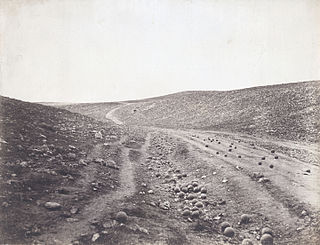 W
WValley of the Shadow of Death is a photograph by Roger Fenton, taken on April 23, 1855, during the Crimean War. It is one of the most well-known images of war.